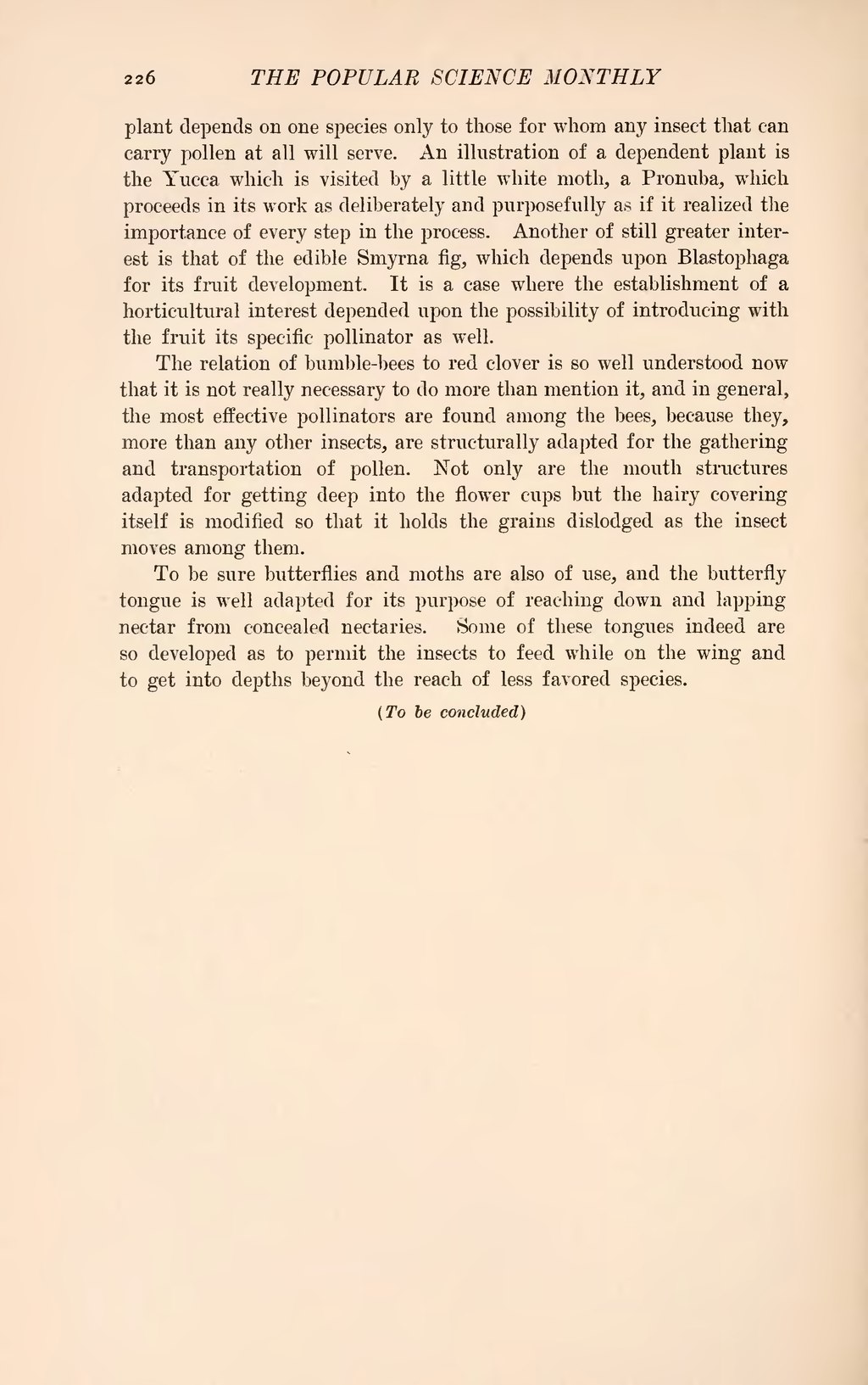plant depends on one species only to those for whom any insect that can carry pollen at all will serve. An illustration of a dependent plant is the Yucca which is visited by a little white moth, a Pronuba, which proceeds in its work as deliberately and purposefully as if it realized the importance of every step in the process. Another of still greater interest is that of the edible Smyrna fig, which depends upon Blastophaga for its fruit development. It is a case where the establishment of a horticultural interest depended upon the possibility of introducing with the fruit its specific pollinator as well.
The relation of bumble-bees to red clover is so well understood now that it is not really necessary to do more than mention it, and in general, the most effective pollinators are found among the bees, because they, more than any other insects, are structurally adapted for the gathering and transportation of pollen. Not only are the mouth structures adapted for getting deep into the flower cups but the hairy covering itself is modified so that it holds the grains dislodged as the insect moves among them.
To be sure butterflies and moths are also of use, and the butterfly tongue is well adapted for its purpose of reaching down and lapping nectar from concealed nectaries. Some of these tongues indeed are so developed as to permit the insects to feed while on the wing and to get into depths beyond the reach of less favored species.
(To be concluded)
